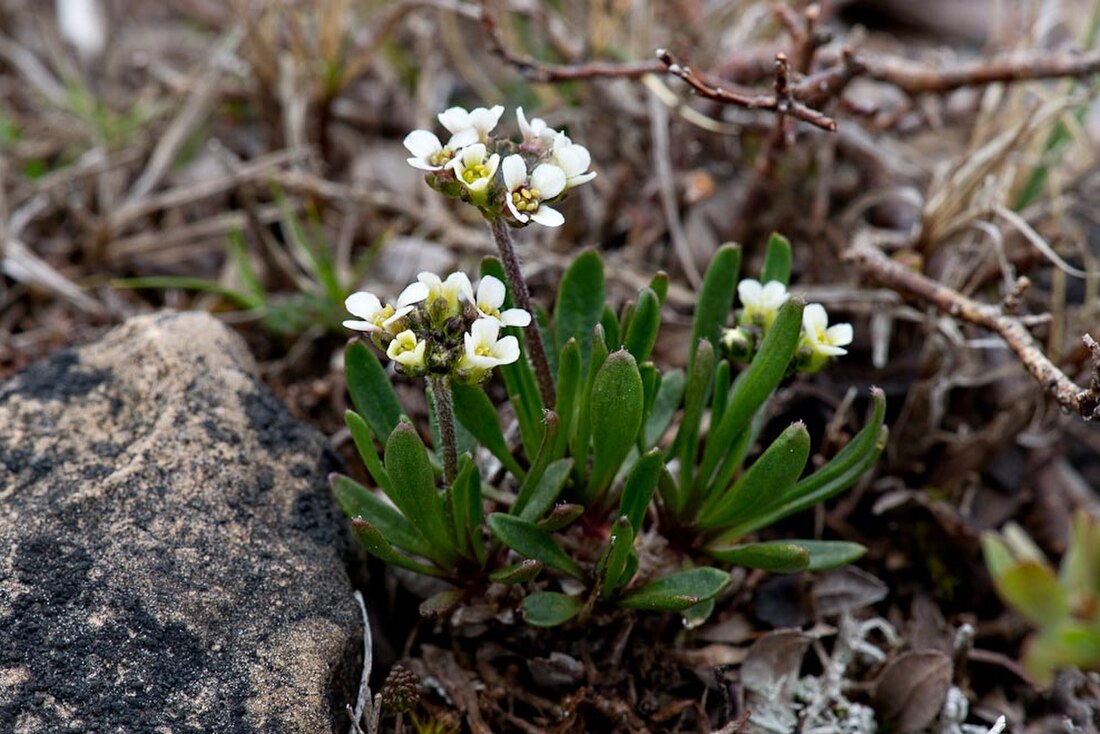Top Qs
Timeline
Chat
Perspective
Braya longii
Species of flowering plant From Wikipedia, the free encyclopedia
Remove ads
Braya longii, common name Long's Braya or Long's northern rockcress, is a small, herbaceous, arctic-alpine flowering plant that grows only in the cool, wet and windy climate of the coastal limestone barrens of northern Newfoundland.[2] It is a narrow endemic, found in only five populations within a range of 6 km, and in one isolated population 14 km to the south,[2] all in the Strait of Belle Isle ecoregion on the extreme northwest portion of the Great Northern Peninsula of Newfoundland.[3]
Remove ads
Description
Braya longii is a small scapous (flower-stalk grows directly from the ground) perennial, with basal leaves that are fleshy and greyish-green to bluish in colour.[1] It stands erect at a height of 1–10 cm.[3] It is an obligate calciphile, meaning that it requires calcium-rich soil, and grows in limestone substrate disturbed by either natural (frost heave, wind or water erosion) or anthropogenic processes. The plant has a deep taproot for anchorage and moisture access, and dies back to the crown in winter.[3] The flowers are each connected to a central scape on stems often with a single leaf, and, like all members of the mustard family, each flower has four tall and two short stamens. White, four-petaled flowers, each with four oval, green to purple-tinged sepals arranged in a raceme,[2] have claws that are usually tinged with bluish- or reddish-violet.[1] Leaves are linear-spatulate,[2] with pointed ends, and measure 1–4 cm in length, 1–3 mm in width.[3]
Remove ads
Conservation status
Braya longii was listed as endangered under the Canadian Species at Risk Act in 1997 and the Newfoundland and Labrador Endangered Species Act in 2002.[3] Its principal threat is habitat loss due to extensive limestone quarrying, road construction and community development. Off-road vehicle use also threatens the plant's habitat, as do road and utility maintenance and climate change. Survival and reproduction are threatened by a non-native herbivorous insect, the diamondback moth, and three microbial pathogens.[3]
Remove ads
References
Wikiwand - on
Seamless Wikipedia browsing. On steroids.
Remove ads


